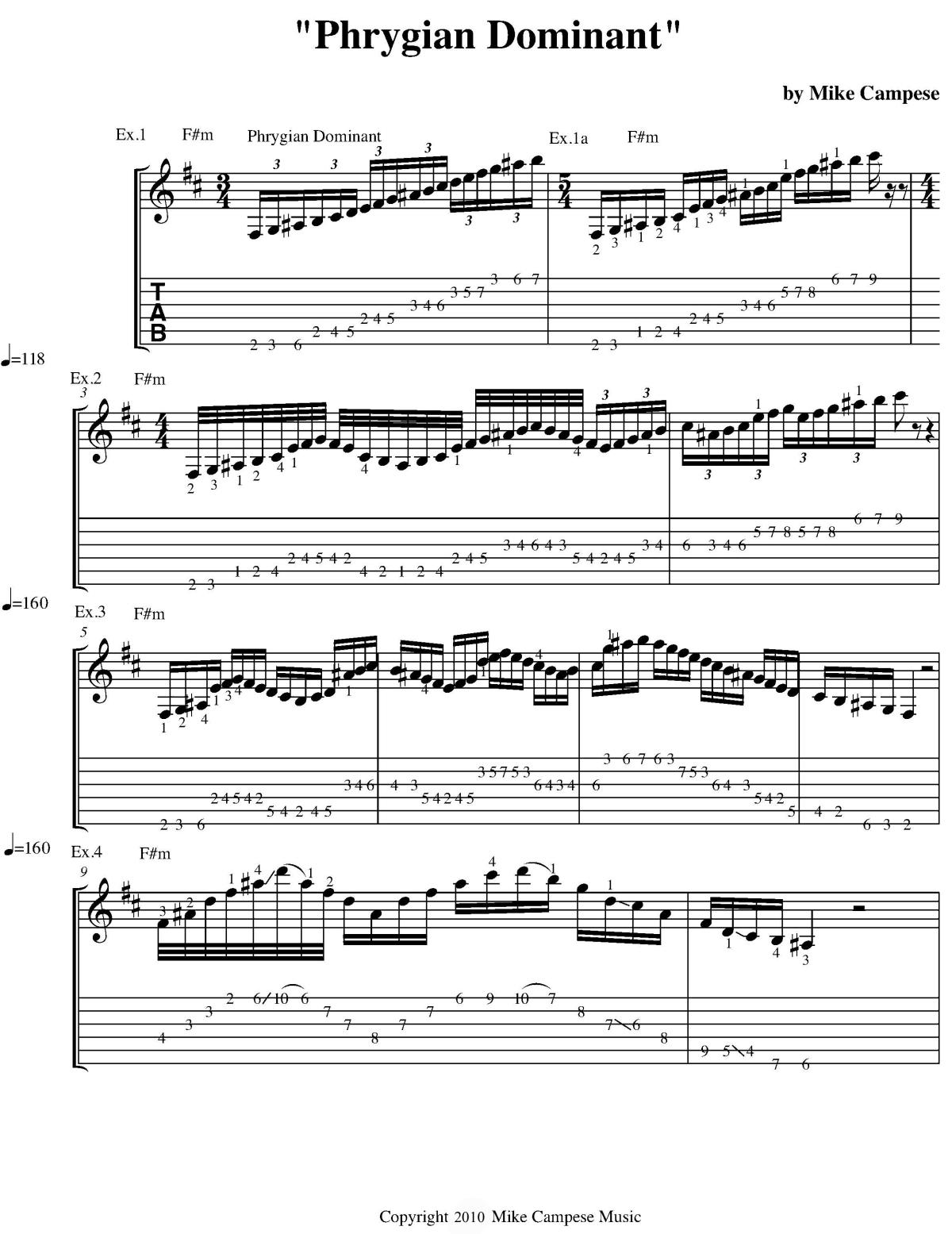Welcome back! In this lesson I will be showing you some examples from the Phrygian Dominant scale, which is the 5th mode of the harmonic minor scale. We covered the harmonic minor in a previous lesson, but I want to spend a little more time with this mode in this lesson. The Phrygian Dominant scale is used in a lot of different types of music; it is used in rock, metal, jazz, classical, etc. The scale formula for this mode is (1, b2, 3, 4, 5, b6, b7); basically, you could refer this to the regular Phrygian scale with a raised 3rd. It sounds great played over major and dominant chords, having a Spanish type flavor. You can experiment by playing power chords off of each note for a more rock approach. OK, let me show you some basic fingerings and lines from this scale I came up with.
Example 1. This is just a basic three note per string pattern for the Phrygian Dominant scale in the key of F#, the notes are (F#, G, A#, B, C#, D, E). The key is to play this scale everywhere on the neck in all keys and make up your own patterns - don't stick to one shape.
MP3 - Example 1
Example 1a. Here is a cool pattern I came up with that brings out the cool exotic flavor of this scale. Basically, it is just a six note pattern moving up in octaves. The six note pattern really begins on the 5th string and moves up the neck, I just started the pattern off the F# on the 6th string, feel free to experiment. You might want to follow the suggested fingerings.
MP3 - Example 1a
Example 2. This example is based off the pattern in example 1a. I
constructed this to demonstrate how you could apply this to your
playing instead of just running up and down the scale.
MP3 - Example 2
Example 3. Here is a cool string skipping line; this is also in the key of F#. You will notice it is constructed from the same pattern I showed you in example 1, it moves up the neck, skipping one string at a time. This can be tricky, but sounds real cool fast.
MP3 - Example 3
Example 4. Let me show you a line using arpeggios from the F# Phrygian Dominant scale. This first arpeggio is an F# augmented arpeggio (F#, A#, D), which shares the same notes as a A# augmented and a D augmented. Because it is symmetrical, the same three notes are repeating in major 3rd intervals. The D augmented is diatonic to F# Phrygian Dominant and so is the F# and G major arpeggios that occur on beat 3 and 4. I use sweep picking to play these arpeggios, be sure to experiment.
MP3 - Example 4

OK, that's it for this lesson! Be sure to make up your own patterns and don't forget to check out my latest CD "Electric City" on this amazing site. Visit mikecampese.com for more information.
Mike Campese is an all-around music performer, session artist and teacher competent in many musical styles, electric and acoustic. He has studied at G.I.T. (Honors Graduate), and with Paul Gilbert, Norman Brown, Stanley Jordan, Scott Henderson and Keith Wyatt.